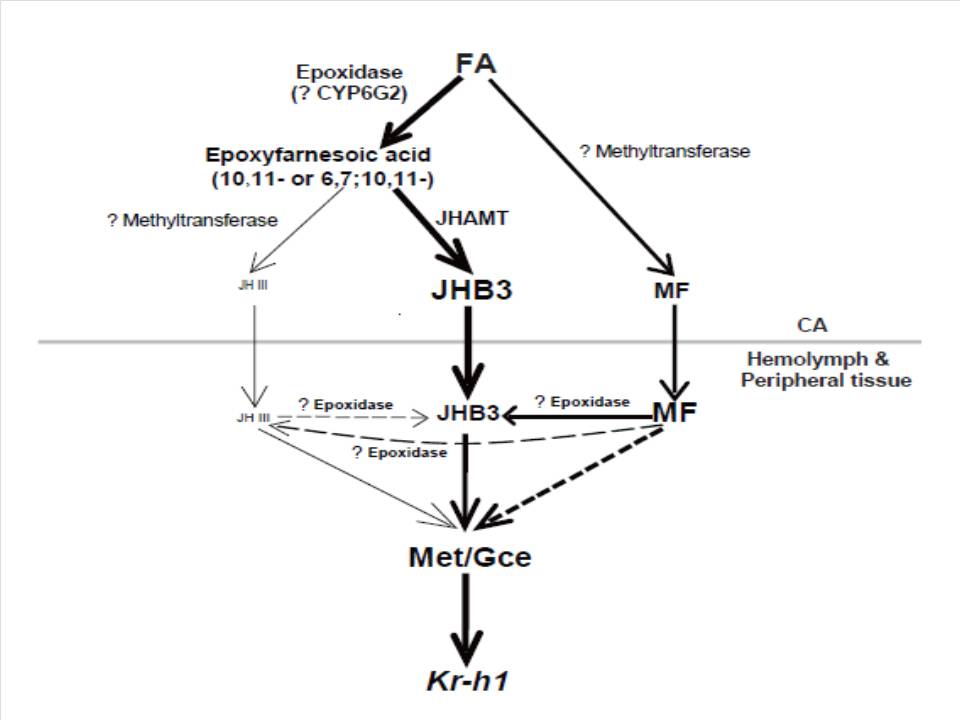Methyl farnesoate controls insect metamorphosis
Insect metamorphosis is jointly controlled by the juvenile hormone (JH) and ecdysone. Methyl farnesoate (MF) is the immediate precursor of JH III in the JH biosynthetic pathway that lacks the characteristic epoxide moiety of JHs. The potential role of MF as a JH in arthropods has been a long-standing debate.
Comprehensive molecular genetics studies by Wen et al. from Prof. Sheng Li’s lab demonstrated that MF plays a dual role in regulating Drosophila metamorphosis. They showed that MF is the most abundant sesquiterpenoid in fly, followed by JHB3 and JH III. All these three compounds could function through Met and Gce, the two JH receptors and induce the expression of Kr-h1, a JH primary-response gene. A proportion of MF could be converted to JHB3 in the hemolymph or peripheral tissues. Topical application of JHB3, JH III, or MF precluded the lethality of JH-deficient animals, but not in the Met/gce double-deletion mutant. Thus, MF might maintain its anti-metamorphic role as one of the JH forms and the diversification of the JH(s) might have contributed to the evolutionary divergence and speciation of different arthropods.
This study entitled “Methyl Farnesoate Plays a Dual Role in Regulating Drosophila Metamorphosis” was published in the journal PLoS Genetics on March 17, 2015. The work was done in collaborations with six other scientists from the U.S. and Canada, and was supported by the Strategic Priority Research Program of the Chinese Academy of Sciences, the 973 program, and the National Science Foundation of China.

Methyl farnesoate plays a dual role in regulating Drosophila metamorphosis